Kenya Landmarks and Monuments
(Kenya, KE, East Africa)
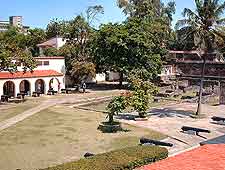
Many of Kenya's most popular landmarks are vestiges of a time when the country, like most parts of
Africa, was under colonial rule. Visitors are also drawn to the country's multitude of natural attractions. These include hard-to-miss landmarks such as Mount Kenya, Lake Victoria and the Menengai Crater.
For historical man-made landmarks, consider checking out the Bomas of Kenya, the Jomo Kenyatta Mausoleum and the State House, all of which reside in
Nairobi. Also very much of note is Fort Jesus in Mombasa, the Mau Mau Caves at the Abedare National Park, and the Mnarani Ruins in the Kilfi District.
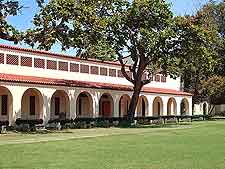
Fort Jesus
Address: Mombasa, Kenya, KE, Africa
This impressive fort overlooks the entrance to Mombasa's Old Port. Built by the Portuguese at the end of the 16th century following a series of Turkish raids, Fort Jesus helped to make Mombasa main centre for trading with
Portugal. As is usually the case with Africa's coastal forts, Fort Jesus has changed hands quite a few times in its long history. Whilst it hasn't survived wholly intact today, the part of the fort that is still habitable is now home to a museum with displays of traded ceramics and pots.
Open hours: daily - 08:30 to 18:00
Admission: charge
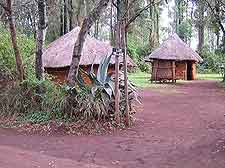
Bomas of Kenya
Address: Nairobi, Kenya, KE, Africa
Tel: +254 20 899 1801
The Bomas of Kenya, located just 10 km / 6 miles from Nairobi, dates back to the 1970s. Aimed at promoting Kenyan culture, the Bomas have become one of the top attractions in the country. Traditional village homesteads, known as 'bomas', certainly make for an interesting exhibit. Visitors are given the opportunity to take a leisurely guided tour of the homesteads, making this a good way to gain an insight into Kenyan culture. However, perhaps of more interest are the various performances of traditional dance and song which are staged here daily in a large circular theatre.
Open hours: daily (performances: Monday to Friday - 14:30; Saturday and Sunday - 15:30)
Admission: charge
State House
Address: State House Road, Nairobi, Kenya, KE, Africa
Formerly known as the Government House, the State House dates back to the beginning of the 20th century and serves as the official residence for Kenya's president. This grand landmark occupies an area covering approximately three square kilometres / one square mile and is just a ten-minute drive from Nairobi city centre. The city's zoo and arboretum are especially close by and easy to locate.
Open hours: daily - view from outside only
Admission: free
Jomo Kenyatta Mausoleum
Address: Parliament Buildings, Nairobi, Kenya, KE, Africa
The final resting place of Jomo Kenyatta has only been opened to the public in recent years. Kenyatta took up office as Prime Minister of self-governing Kenya in 1963. A year later, Kenya became a Republic with Kenyatta as its first President. The Mausoleum often features in Nairobi City tours.
Open hours: daily
Admission: charge
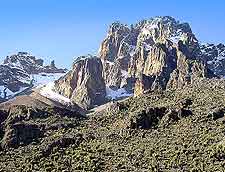
Mount Kenya
Address: Kenya, KE, Africa
Mount Kenya ranks as the country's second-highest mountain at 5,199 metres / 17,058 feet. This extinct volcano actually has three peaks, one of which can be reached by hikers. The other two require more technical climbing skills and are increasingly popular with ice and rock climbers. For wildlife lovers, Mount Kenya remains a popular place to look out for white elephant, rhino, buffalo and leopard, as well as some interesting high-altitude plant life. Whilst this imposing mountain is often overshadowed by its younger, more famous neighbour, Mount Kilimanjaro, the sheer beauty is bound to be an inspiration to your senses.
Open hours: daily
Admission: free
Lake Victoria
Address: Kenya, KE, Africa
This vast lake can be claimed by three countries - Uganda, Tanzania and Kenya. The Kenyan part of the lake is located in the north-eastern part of the country. As well as being notable as the second-largest freshwater lake in the world, Lake Victoria stands out for its remarkably beautiful scenery and prehistoric remains found around the lake's edges. It is little wonder that a number of health resorts and attractions have sprung up to cater for the many visitors to the area.
Open hours: daily
Admission: free
Mau Mau Caves
Address: Abedare National Park, Kenya, KE, Africa
Tel: +254 171 55645
The Mau Mau Caves were thought to have been the hideout of the Mau Mau freedom fighters. In 1959, they were unfortunately badly damaged during the tumultuous Mau Mau Rebellion. Visitors will find that most safaris in the area around Mount Kenya generally include a visit to the caves, although with a stiff three-hour walk just to get to the caves, only the more adventurous and athletic tend to make the trip.
Open hours: daily
Admission: charge
Mnarani Ruins
Address: Kilfi District, Kenya, KE, Africa
The ancient Mnarani settlement is said to date back to the 14th century. The coastal site fell into decay after the 17th century following a period of war and failed water supplies. Perhaps best preserved of the ruins at Mnarani is the Great Mosque. Other vestiges of the site's former glory include carved tombs, a smaller mosque, and remnants of a town wall and gate. A visit to the ruins makes for a good day out, with perhaps a picnic thrown in for good measure.
Open hours: daily
Admission: free
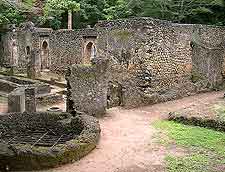
Gedi Ruins / Gede Ruins
Address: Gedi, Kenya, KE, Africa
Just to the south of Watamu is an impressive collection of ruined palaces, mosques and houses. In the 13th century, Gedi was a bustling city; by the 19th century it had been abandoned. Whilst the reason for this abandonment is not entirely clear, it is thought that attacks by local tribes were behind its downfall. The ruins were uncovered in the 1920s by the famous archaeologist and naturalist Louis Leakey.
Open hours: daily - 07:00 to 18:00
Admission: charge
Menengai Crater
Address: Great Rift Valley, Kenya, KE, Africa
The Menengai Crater's statistics are impressive, to say the least. Measuring 12 km / 7 miles across and 500 metres / 1,640 feet in depth, it is hard to get a sense of its sheer size. It certainly helps to view the crater from a lookout point. In the mid-19th century, the crater was the site of a bloody battle between the Ilaikipiak and Maasai tribes, with many of the former meeting their end by being thrown into the crater. Together with legends that the crater is haunted by evil spirits, it is hardly surprising that even locals aren't particularly keen on going too near the crater's edge. The Menengai Crater can be reached after a fairly long hike, although this can be made shorter if a taxi can be found.
Open hours: daily
Admission: free
 Many of Kenya's most popular landmarks are vestiges of a time when the country, like most parts of Africa, was under colonial rule. Visitors are also drawn to the country's multitude of natural attractions. These include hard-to-miss landmarks such as Mount Kenya, Lake Victoria and the Menengai Crater.
Many of Kenya's most popular landmarks are vestiges of a time when the country, like most parts of Africa, was under colonial rule. Visitors are also drawn to the country's multitude of natural attractions. These include hard-to-miss landmarks such as Mount Kenya, Lake Victoria and the Menengai Crater.


